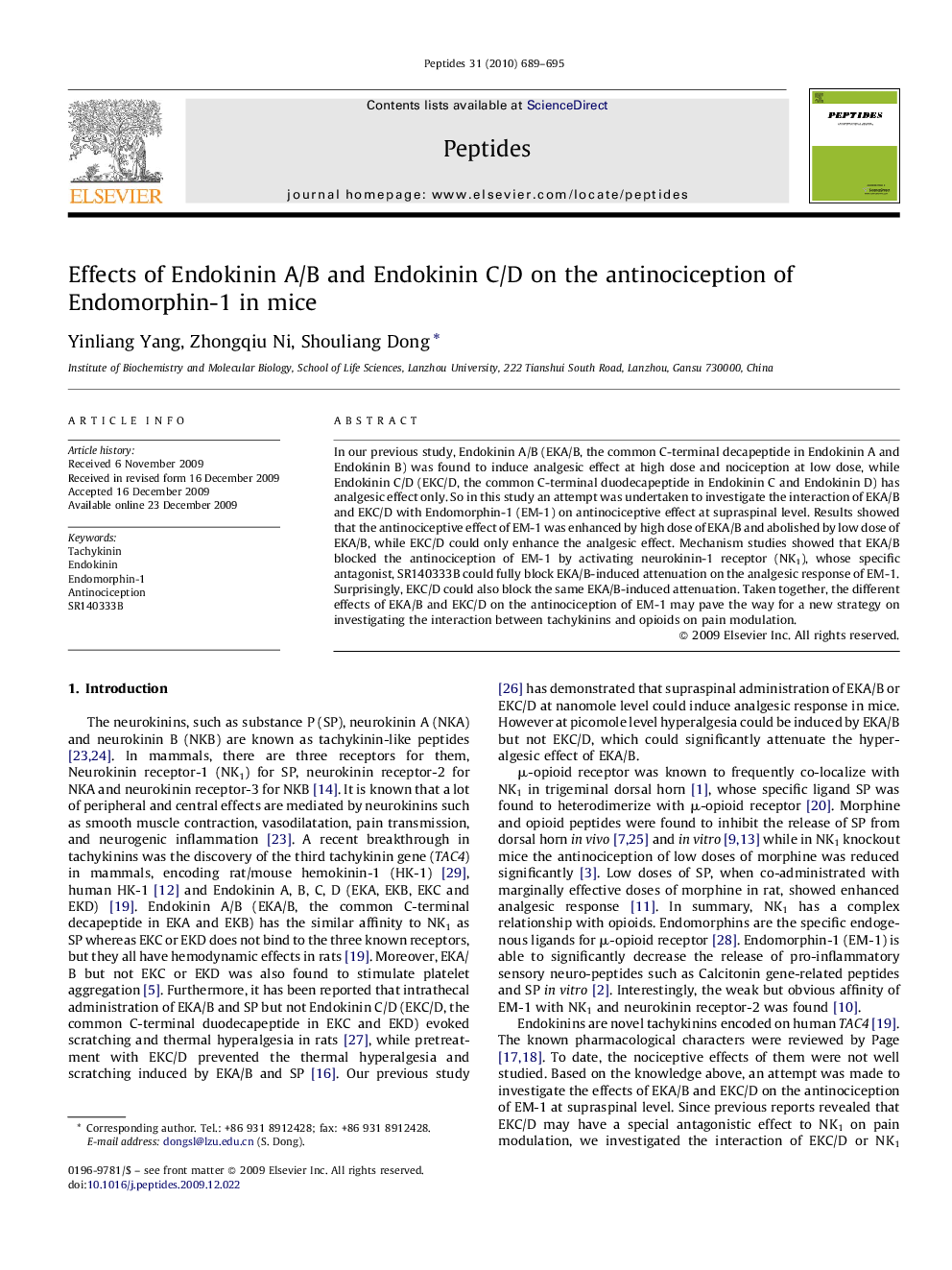| Article ID | Journal | Published Year | Pages | File Type |
|---|---|---|---|---|
| 2006897 | Peptides | 2010 | 7 Pages |
In our previous study, Endokinin A/B (EKA/B, the common C-terminal decapeptide in Endokinin A and Endokinin B) was found to induce analgesic effect at high dose and nociception at low dose, while Endokinin C/D (EKC/D, the common C-terminal duodecapeptide in Endokinin C and Endokinin D) has analgesic effect only. So in this study an attempt was undertaken to investigate the interaction of EKA/B and EKC/D with Endomorphin-1 (EM-1) on antinociceptive effect at supraspinal level. Results showed that the antinociceptive effect of EM-1 was enhanced by high dose of EKA/B and abolished by low dose of EKA/B, while EKC/D could only enhance the analgesic effect. Mechanism studies showed that EKA/B blocked the antinociception of EM-1 by activating neurokinin-1 receptor (NK1), whose specific antagonist, SR140333B could fully block EKA/B-induced attenuation on the analgesic response of EM-1. Surprisingly, EKC/D could also block the same EKA/B-induced attenuation. Taken together, the different effects of EKA/B and EKC/D on the antinociception of EM-1 may pave the way for a new strategy on investigating the interaction between tachykinins and opioids on pain modulation.
